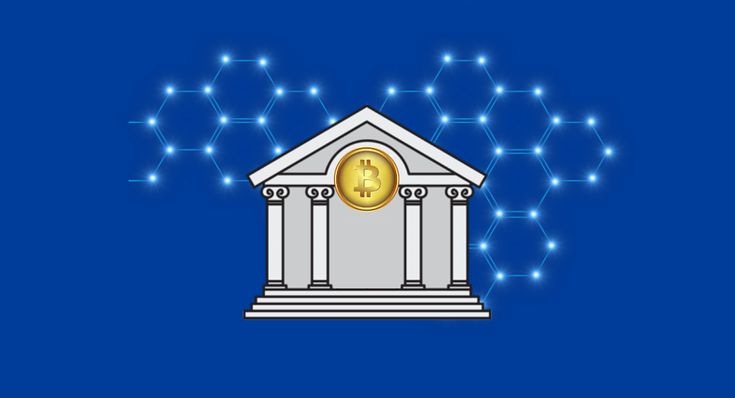Blockchain technology has emerged as a groundbreaking force in the financial world, reshaping how transactions are conducted, recorded, and verified across the globe. This innovative technology is rapidly redefining the traditional banking system, introducing a more secure, transparent, and efficient method of transferring value. In this article, we explore the history, underlying mechanics, and multifaceted impact of blockchain on financial transactions. We also examine real-world applications, the challenges faced during its adoption, and the promising future that lies ahead for both consumers and financial institutions.
The financial industry has witnessed many transformations over the past few decades. However, the advent of blockchain technology represents a paradigm shift that challenges the very core of how money is exchanged and managed. Unlike traditional systems that rely on centralized authorities such as banks and clearinghouses, blockchain operates on a decentralized model. This shift not only reduces operational costs but also minimizes fraud and enhances trust among parties. In a world where digital transactions are increasingly the norm, blockchain’s potential to revolutionize financial transactions has become a hot topic for regulators, investors, and innovators alike.
Blockchain’s ability to create immutable records and eliminate the need for intermediaries has profound implications. It can simplify international money transfers, improve the security of financial records, and enable innovative financial products like cryptocurrencies and smart contracts. As we delve deeper into this subject, it becomes clear that blockchain is not just a fleeting trend but a technological revolution with the power to transform global finance.
Understanding Blockchain Technology
At its core, blockchain is a distributed ledger technology (DLT) that records transactions in a secure and tamper-proof manner. Every transaction is grouped into a block and linked to the previous one, forming a continuous chain that is virtually impossible to alter without the consensus of the network.
Key Components of Blockchain
A. Decentralization:
Traditional financial systems rely on a central authority to validate transactions. In contrast, blockchain operates on a peer-to-peer network where every participant holds a copy of the ledger, ensuring transparency and reducing the risk of centralized corruption.
B. Immutable Ledger:
Once recorded, the information on a blockchain cannot be changed or deleted. This immutability guarantees the integrity of transaction records, making it easier to trace the history of any asset or currency.
C. Consensus Mechanisms:
Blockchain networks use consensus algorithms, such as Proof of Work (PoW) and Proof of Stake (PoS), to validate transactions. These mechanisms ensure that all participants agree on the state of the ledger, providing security against fraudulent activities.
D. Smart Contracts:
These self-executing contracts automatically enforce the terms of an agreement when predetermined conditions are met. Smart contracts eliminate the need for intermediaries and reduce the risk of human error.
E. Cryptographic Security:
Advanced cryptography ensures that data within the blockchain is secure from unauthorized access and tampering. Each block contains a cryptographic hash of the previous block, creating a chain that is highly resistant to hacking.
The Evolution of Financial Systems
The history of financial systems is marked by constant innovation aimed at improving the efficiency and security of transactions. From the barter system to modern-day digital payments, each evolution has introduced new challenges and opportunities. Blockchain represents the next logical step in this evolution—a system that leverages digital technology to create a more secure and efficient financial ecosystem.
From Centralized Banking to Decentralized Finance
Historically, banks and other financial institutions have acted as gatekeepers in financial transactions. They provide a trusted platform for individuals and businesses to exchange money. However, this centralization comes at a cost:
A. High Transaction Fees:
Centralized systems often involve multiple intermediaries, each taking a fee for their services. This increases the overall cost of transactions.
B. Delayed Processing Times:
Cross-border transactions, in particular, can take several days to process due to the need for multiple verifications and approvals.
C. Risk of Single Points of Failure:
Centralized systems are vulnerable to systemic failures. A security breach or technical glitch in a central institution can have widespread repercussions.
Blockchain disrupts these traditional models by removing intermediaries and allowing direct peer-to-peer transactions. This shift not only reduces fees and processing times but also significantly enhances the security and resilience of financial systems.
Blockchain in Banking and Payments
Blockchain’s influence is most evident in the banking and payments sectors. As the financial landscape becomes more digitized, banks are increasingly turning to blockchain to streamline operations and offer new services.
Benefits for the Banking Sector
A. Enhanced Security:
The decentralized nature of blockchain minimizes the risk of data breaches and fraud. With every transaction being recorded on an immutable ledger, unauthorized alterations become nearly impossible.
B. Cost Reduction:
By eliminating intermediaries, blockchain reduces transaction fees and operational costs. This cost efficiency is particularly beneficial for cross-border payments, where traditional methods incur high fees.
C. Increased Transparency:
Every transaction on a blockchain is recorded and visible to all participants. This transparency fosters trust among users and regulators alike.
D. Faster Settlements:
Traditional international money transfers can take days to process. Blockchain enables near-instantaneous settlement, improving the overall speed of financial transactions.
Case Studies in Banking Innovation
-
International Remittances:
Blockchain technology has revolutionized the remittance industry by enabling faster, cheaper, and more transparent money transfers. Companies are now able to bypass traditional banking channels, making it easier for individuals to send money across borders. -
Digital Identity Verification:
Some banks are implementing blockchain to create secure digital identities for their customers. This innovation simplifies the verification process, reducing the time required to open new accounts or process transactions. -
Trade Finance:
Blockchain is also being used to enhance trade finance by streamlining documentation and reducing fraud. By providing a transparent and immutable record of transactions, blockchain facilitates trust between international trading partners.
Real-World Applications of Blockchain
The impact of blockchain extends beyond traditional banking, influencing various sectors of the global economy. Its applications are diverse and range from cryptocurrency exchanges to supply chain management.
Cryptocurrency and Beyond
While cryptocurrencies like Bitcoin and Ethereum have popularized blockchain technology, the applications extend far beyond digital currencies. The technology is now being integrated into various industries:
A. Decentralized Finance (DeFi):
DeFi platforms are built on blockchain technology to offer financial services such as lending, borrowing, and trading without intermediaries. These platforms democratize access to financial products by eliminating traditional barriers.
B. Smart Contracts for Legal Agreements:
Smart contracts are used to automate complex legal agreements, reducing the need for lawyers and intermediaries. This innovation simplifies processes such as property transfers, insurance claims, and employment contracts.
C. Supply Chain Transparency:
Blockchain enhances the traceability of products as they move through the supply chain. This increased transparency is particularly valuable in industries such as food and pharmaceuticals, where verifying the origin and authenticity of products is crucial.
D. Voting Systems:
Some governments and organizations are exploring blockchain-based voting systems to enhance the security and transparency of elections. The immutable nature of blockchain can help prevent election fraud and ensure that every vote is accurately recorded.
Security Enhancements and Fraud Prevention
One of the most significant advantages of blockchain is its robust security features. The technology’s cryptographic underpinnings make it extremely resistant to hacking and fraudulent activities.
How Blockchain Enhances Security
A. Immutable Records:
Once data is recorded on the blockchain, it cannot be altered. This permanence ensures that transaction records remain accurate and tamper-proof.
B. Distributed Network:
By spreading data across a network of computers, blockchain eliminates the risk associated with a single point of failure. Even if one node is compromised, the overall integrity of the system remains intact.
C. Cryptographic Hashing:
Each block contains a unique hash that links it to the previous block. Any attempt to alter a block would require altering every subsequent block—a computationally prohibitive task.
D. Consensus Protocols:
The use of consensus mechanisms means that no single participant can control the network. Transactions are validated by multiple nodes, ensuring that only legitimate transactions are added to the ledger.
These security features are instrumental in reducing the risk of fraud, making blockchain an ideal solution for financial institutions and other organizations that require a high level of data integrity.
Regulatory Landscape and Challenges
Despite its transformative potential, blockchain technology faces several regulatory and operational challenges that could affect its widespread adoption. Governments and regulatory bodies are still in the process of developing frameworks to govern the use of blockchain in various sectors.
Regulatory Considerations
A. Compliance with Existing Laws:
As blockchain disrupts traditional financial systems, it must align with existing regulatory requirements. This includes anti-money laundering (AML) and know-your-customer (KYC) regulations.
B. Data Privacy:
The transparency of blockchain can conflict with data protection laws. Regulators are exploring ways to balance the need for transparency with the right to privacy.
C. Cross-Border Regulations:
Since blockchain operates on a global scale, coordinating regulatory efforts between different jurisdictions is essential. Discrepancies in regulations can hinder the smooth operation of blockchain networks.
D. Consumer Protection:
Ensuring that consumers are protected from fraud and other risks is a key regulatory concern. This includes establishing clear guidelines on the liability of service providers and users in case of breaches or disputes.
Operational and Technical Challenges
A. Scalability:
As blockchain networks grow, scalability becomes a critical issue. High transaction volumes can lead to network congestion, slower processing times, and increased transaction fees.
B. Interoperability:
Different blockchain platforms often operate in isolation from one another. Achieving seamless interoperability between various systems is necessary for the technology to reach its full potential.
C. Energy Consumption:
Some consensus algorithms, particularly Proof of Work, consume significant amounts of energy. This environmental concern has prompted the exploration of more sustainable alternatives like Proof of Stake.
D. User Adoption:
For blockchain to achieve mainstream success, users must be willing to adopt new technologies and change traditional practices. Overcoming the resistance to change remains a significant hurdle.
The Role of Smart Contracts
Smart contracts are one of the most exciting innovations within the blockchain ecosystem. These programmable contracts automate the execution of agreements, ensuring that the stipulated conditions are met without human intervention.
Advantages of Smart Contracts
A. Efficiency:
By automating the process of verifying and executing contractual terms, smart contracts significantly reduce administrative overhead and processing time.
B. Transparency:
The terms and conditions embedded in smart contracts are visible to all parties, ensuring complete transparency and reducing the risk of disputes.
C. Cost Savings:
Eliminating intermediaries not only speeds up transactions but also reduces associated costs. This is particularly beneficial in complex transactions that traditionally require multiple parties.
D. Reliability:
Once deployed, smart contracts run automatically and are not susceptible to human error or bias. Their deterministic nature guarantees that contractual obligations are met as specified.
Blockchain’s Impact on Global Financial Inclusion
Blockchain technology holds the promise of increasing financial inclusion on a global scale. By removing traditional barriers to entry, blockchain can provide unbanked and underbanked populations with access to financial services that were previously out of reach.
Ways Blockchain Enhances Inclusion
A. Lowering Entry Barriers:
With minimal infrastructure requirements, blockchain allows individuals in remote or underserved regions to participate in the global financial system using a smartphone or basic internet connection.
B. Cost-Effective Services:
The reduced transaction costs associated with blockchain make financial services more affordable. This is particularly crucial in developing countries where traditional banking fees can be prohibitively expensive.
C. Innovative Financial Products:
Decentralized finance (DeFi) platforms powered by blockchain offer a variety of financial services, including microloans, savings accounts, and insurance, that are tailored to the needs of low-income individuals.
D. Enhanced Security:
The robust security features of blockchain help protect vulnerable populations from fraud and exploitation, fostering trust in digital financial services.
Integration with Other Emerging Technologies
The synergy between blockchain and other emerging technologies such as the Internet of Things (IoT), artificial intelligence (AI), and big data analytics is set to further enhance the capabilities of financial systems.
Potential Integrations
A. Blockchain and IoT:
Integrating blockchain with IoT devices can create smart, automated payment systems. For instance, connected devices can facilitate microtransactions in real time, optimizing processes in industries like logistics and supply chain management.
B. Artificial Intelligence and Blockchain:
AI can analyze blockchain data to predict market trends, detect fraudulent activities, and optimize transaction processes. The combination of these technologies promises a more responsive and adaptive financial ecosystem.
C. Big Data Analytics:
Blockchain’s transparent ledger provides a wealth of data that, when combined with advanced analytics, can yield insights into consumer behavior, market trends, and risk management.
The Future of Blockchain in Finance
The journey of blockchain technology is just beginning. As the technology matures and regulatory frameworks become more defined, we can expect an even broader range of applications in the financial sector.
Future Trends to Watch
A. Central Bank Digital Currencies (CBDCs):
Many governments are exploring the creation of digital currencies based on blockchain technology. CBDCs have the potential to revolutionize monetary policy and provide a more efficient medium of exchange for everyday transactions.
B. Interoperable Blockchain Networks:
Future developments may focus on creating blockchain networks that can seamlessly interact with each other, breaking down silos and creating a truly interconnected global financial ecosystem.
C. Enhanced Privacy Features:
As regulators balance transparency with privacy, new blockchain solutions are likely to emerge that incorporate advanced privacy features while maintaining accountability.
D. Wider Adoption in Traditional Finance:
Financial institutions, from banks to investment firms, are expected to continue integrating blockchain technology into their operations. This will lead to more secure transactions, faster settlements, and innovative financial products tailored to the modern digital age.
Overcoming the Barriers to Adoption
Despite the significant benefits, the widespread adoption of blockchain in financial transactions faces several hurdles. Addressing these challenges is crucial for realizing the full potential of blockchain technology.
Strategies for Promoting Adoption
A. Regulatory Collaboration:
Financial institutions and technology providers must work closely with regulators to develop frameworks that promote innovation while ensuring consumer protection.
B. Educational Initiatives:
Raising awareness about the benefits and functionalities of blockchain technology is essential. Educational campaigns targeting both industry professionals and the general public can accelerate adoption.
C. Pilot Programs and Collaborations:
Implementing pilot projects and establishing partnerships between traditional financial institutions and blockchain startups can demonstrate the technology’s effectiveness and encourage broader acceptance.
D. Technological Advancements:
Continuous research and development are necessary to address issues like scalability and energy consumption. Innovations in consensus algorithms and network architecture will further solidify blockchain’s role in the financial ecosystem.
Conclusion
Blockchain technology is more than just a buzzword—it is a transformative force that is reshaping the landscape of global finance. With its decentralized, secure, and transparent nature, blockchain has the potential to eliminate inefficiencies, reduce costs, and provide unparalleled security in financial transactions. As banks, governments, and technology innovators continue to explore its capabilities, blockchain is poised to become a cornerstone of the modern financial system.
The journey ahead may be fraught with challenges such as regulatory hurdles, scalability issues, and interoperability concerns. However, the collective efforts of industry leaders, policymakers, and tech developers promise to unlock the full potential of blockchain technology. From enhancing global financial inclusion to paving the way for central bank digital currencies, the revolution is already underway. By embracing this innovative technology, we stand on the brink of a new era in financial transactions—one that is defined by efficiency, transparency, and inclusivity.
As the financial world continues to evolve, blockchain will undoubtedly play a pivotal role in shaping the future of money. Whether you are a financial institution seeking to streamline operations or an individual looking to participate in a more inclusive economy, understanding and leveraging blockchain technology is essential for thriving in the digital age.



